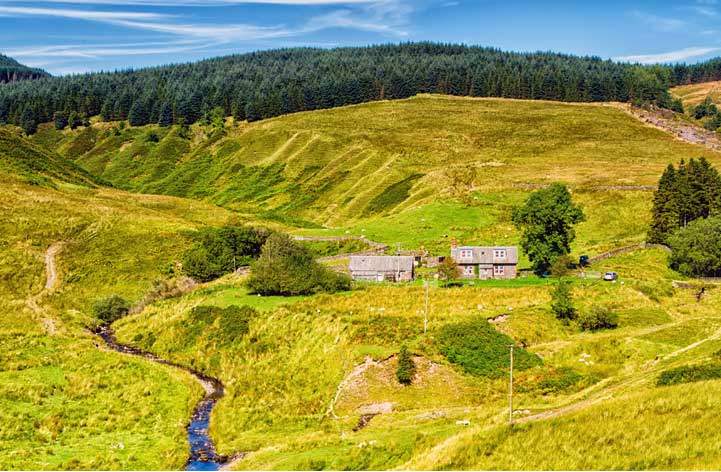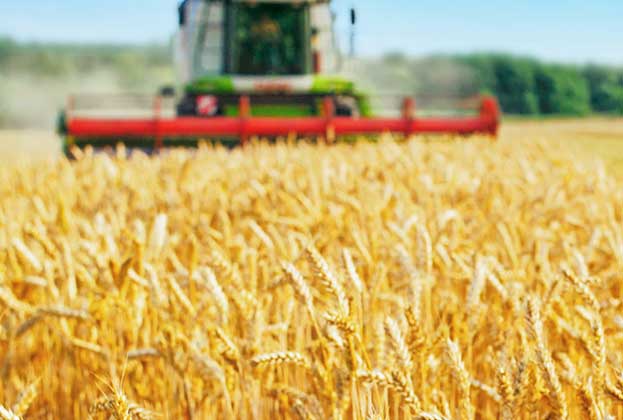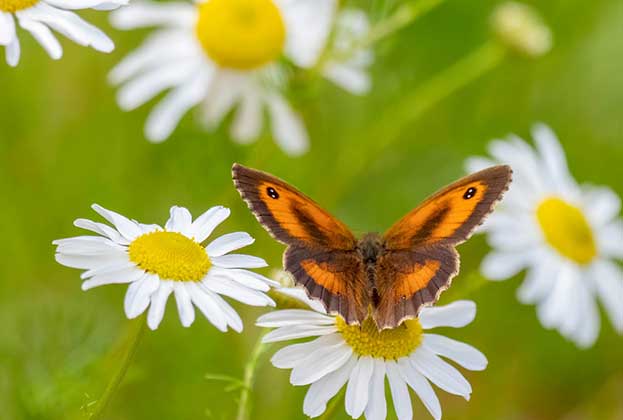Farmland supply remains at a record low, but encouraging market activity saw farmland values edge higher

As the market emerged from winter hibernation into the first Covid-19 lockdown, it was May before activity levels gained momentum. A busy summer period saw the market recover surprisingly well as simmering pent-up demand now matched a backlog of supply. This split in activity saw 80% of publicly marketed supply launched from June onwards, as society adjusted to a new way of life and confidence in the market returned.
Despite the late surge, publicly marketed farmland supply set a new record low for the second consecutive year. Ongoing uncertainty relating to Brexit trade negotiations and agricultural subsidy reform, coupled with the Covid-19 lockdown, understandably reduced the confidence of potential sellers, with many continuing to delay major decisions until detail and clarity in the future business environment improves.
Some market subsectors attracted strong interest. Lifestyle and amenity farmland was particularly sought after as Covid-19 increased the desire for more space and indeed more green space
Angus Locke, Associate, Rural Research
Some market subsectors attracted strong interest. Lifestyle and amenity farmland was particularly sought after as Covid-19 increased the desire for more space and indeed more green space. Rural estates with diversified revenue streams and notable residential components were also in demand. Scotland and northern England saw a growing appetite for greenfield forestry land as the increasing presence of new environmentally motivated buyers begins to strengthen. In contrast, more commercial lowland farms saw mixed results, with a wide variety of prices achieved based on quality, location and local competition.
Values to December 2020
Average farmland values remained remarkably resilient for 2020 showing no impact from the wider economic uncertainty. Results from the Savills Farmland Values Survey showed average values across all land classes in Great Britain increased for the 12 months to December 2020, with our average 'all land types' indicator finishing up 0.7% at £6,740 per acre.
Average farmland values remained remarkably resilient for 2020 showing no impact from the wider economic uncertainty
Angus Locke, Associate, Rural Research
Average prime arable and Grade 3 arable values were up almost 1% at £8,800 per acre and £7,360 per acre respectively. Prime dairy land was unchanged at £6,770 per acre, with Grade 3 livestock finishing 0.7% higher at £5,420 per acre. Among the lower quality land types, poor arable rose 1.1% to £6,620 per acre with poor livestock up 0.7% to £4,110 per acre. Interest has been building at this end of the market over the last couple of years as environmentally motivated buyers begin to compete for land with forestry planting potential. This is particularly evident in Scotland where poor livestock land values increased some 17.5% during 2020.
As we have noted in the past, the market continues to see a wide variety of results either side of these averages as property quality, local demand and other special purchaser motivations may have a greater influence on buyer sentiment, particularly where supply is limited.
Supply to December 2020
For the second consecutive year farmland supply was at a record low: just 114,000 acres of lowland were bought to the public market for 2020. This undercuts last year’s record of 122,000 acres and is the lowest since Savills started tracking the farmland market in 1993. Last year’s farmland supply was 7% down on 2019 and 31% down on the five-year average.
The difference was greatest in Scotland where supply was 57% down on the five-year average. However, the majority of regions saw supply decline by between 20–40% based on this metric. Wales was the one exception. Supply exceeded the five-year average by 14%, albeit off a comparatively smaller base.
Analysis of lowland farms above 50 acres brought to the public market suggests that the average farm size sold was 160 acres, approximately 25% smaller than the average farm size of the previous 10 years. The average was low last year too, at 174 acres. The recent reduction in average marketed farm size is likely to be due to a higher proportion of lifestyle and amenity properties being marketed in 2020.
Buyer and seller analysis
Savills transactions show existing farmers made up 49% of purchasers, up from 42% last year with farm expansion being the overwhelming motivator (45% of all transactions). Non-farming buyers were successful in 34% of deals with lifestyle purchasers accounting for over half of this figure for the first time in recent history. Institutions and other corporations accounted for 10% of buyers, up from 5% last year. An active lifestyle and amenity market in 2020, saw non-farmers account for 63% of vendors, an increase from 48% in 2019. Most of this change can be attributed to farmers being less active in the market. As a proportion of sellers, their share decreased from 36% in 2019 to 23%, confirming that many were awaiting clarity on the future business environment before making major investment decisions. Institutions and other corporations accounted for 12% of vendors down from 14% last year.
Read the articles within Spotlight: The Farmland Market below.


